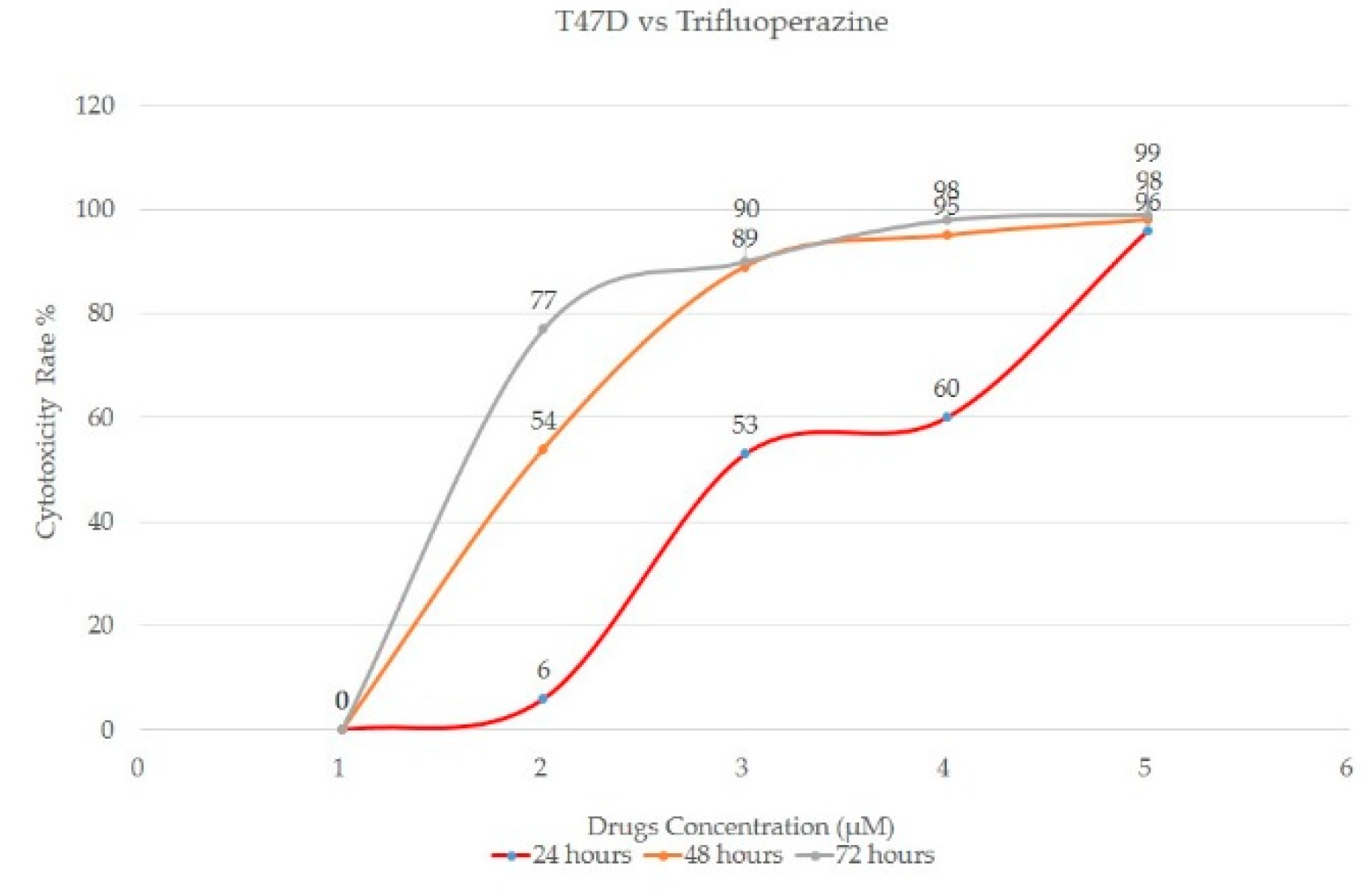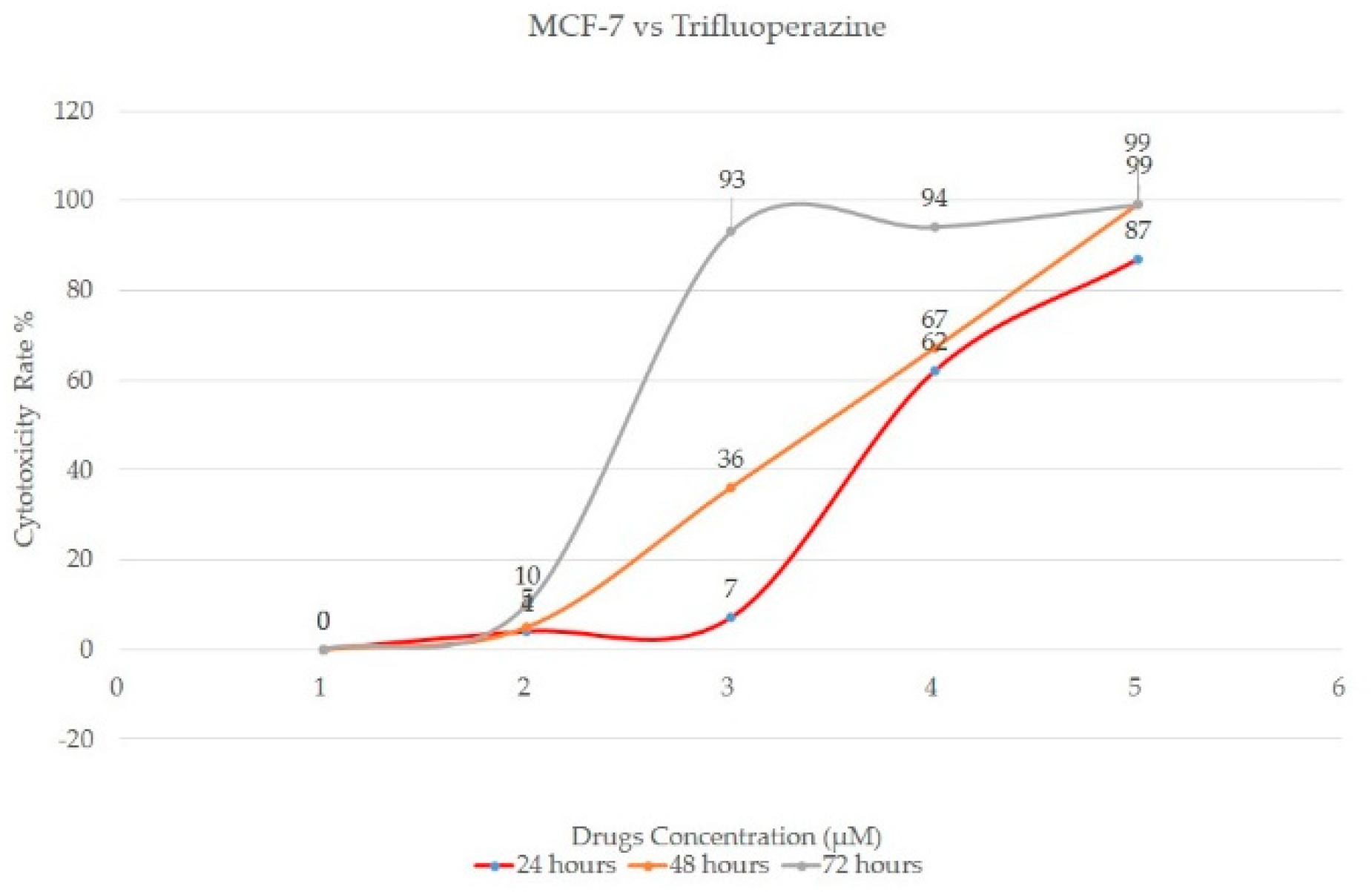Calmodulin Antagonists as Potential Therapeutic Agents for Cancer Treatment “Breast Cancer” †
Abstract
:1. Introduction
2. Materials and Methods
3. Results and Discussion
4. Conclusions
Acknowledgments
References
- Siegel, R.L.; Miller, K.D.; Jemal, A.I. Cancer Statistics, 2017. CA Cancer J. Clin. 2017, 67, 7–30. [Google Scholar] [CrossRef] [PubMed]
- Torre, L.A.; Bray, F.; Siegel, R.L.; Ferlay, J.; Lortet-Tieulent, J.; Jemal, A. Global cancer statistics, 2012. CA Cancer J. Clin. 2015, 65, 87–108. [Google Scholar] [CrossRef] [PubMed]
- Cheung, WY. Cyclic 3',5’-nucleotide phosphodiesterase: pronounced stimulation by snake venom. Biochem. Biophys. Res. Commun. 1967, 29, 478–482. [Google Scholar] [CrossRef]
- Salih, F.A.M.; Bhatnagar, R.; Bhatnagar, N.; Singh, Y.; Murthy, P.S.; Venkitasubramanian, T.A. On the presence of Calmodulin-like protein in Mycobacteria. FEMS Microbiol. Lett. 1988, 56, 89–94. [Google Scholar]
- Salih, F.A.M.; Alabadi, R. Possible role of Calmodulin in gene activation and regulation. Short Communication (one-page preliminary result), Int. Med. J. Malaysia 2004, 3, 3. [Google Scholar]
- Audran, E.; Dagher, R.; Gioria, S.; Tsvetkov, P.O.; Kulikova, A.A.; Didier, B.; Villa, P.; Makarov, A.A.; Kilhoffer, M.C.; Haiech, J.A. General Framework to characterize inhibitors of calmodulin: use of calmodulin Inhibitors to study the interaction between calmodulin and its calmodulin binding domains. Biochim. Biophys Acta. 2013, 1833, 1720–1731. [Google Scholar] [CrossRef] [PubMed]
- Favy, D.A.; Lafarge, S.; Rio, P.; Vissac, C.; Bignon, Y.-J.; Bernard-Gallon, D.; Real-Time, P.C.R. Quantification of Full-Length and Exon 11 Spliced BRCA 1 Transcripts in Human Breast Cancer Cell Lines. Biochem. Biochem. Res. Commun. 2000, 274, 73–78. [Google Scholar] [CrossRef] [PubMed]




| Calmodulin Antagonists | MCF-7 | T47D | MDAMB-231 |
|---|---|---|---|
| Tamoxifen | 10 µM | 13 µM | 25 µM |
| Phenothiazine | 11 µM | 14 µM | 20 µM |
| Trifluoperazine | 9 µM | 10 µM | 19 µM |
Publisher’s Note: MDPI stays neutral with regard to jurisdictional claims in published maps and institutional affiliations. |
© 2018 by the authors. Licensee MDPI, Basel, Switzerland. This article is an open access article distributed under the terms and conditions of the Creative Commons Attribution (CC BY) license (https://creativecommons.org/licenses/by/4.0/).
Share and Cite
Salih, F.A.M.; Tani, A.Z.; Kumar, V.; Hadi, J.; Mutanjun, D. Calmodulin Antagonists as Potential Therapeutic Agents for Cancer Treatment “Breast Cancer”. Proceedings 2018, 2, 1550. https://doi.org/10.3390/proceedings2251550
Salih FAM, Tani AZ, Kumar V, Hadi J, Mutanjun D. Calmodulin Antagonists as Potential Therapeutic Agents for Cancer Treatment “Breast Cancer”. Proceedings. 2018; 2(25):1550. https://doi.org/10.3390/proceedings2251550
Chicago/Turabian StyleSalih, Falah A. M., Ahmad Zaidi Tani, Vijay Kumar, Janan Hadi, and David Mutanjun. 2018. "Calmodulin Antagonists as Potential Therapeutic Agents for Cancer Treatment “Breast Cancer”" Proceedings 2, no. 25: 1550. https://doi.org/10.3390/proceedings2251550
APA StyleSalih, F. A. M., Tani, A. Z., Kumar, V., Hadi, J., & Mutanjun, D. (2018). Calmodulin Antagonists as Potential Therapeutic Agents for Cancer Treatment “Breast Cancer”. Proceedings, 2(25), 1550. https://doi.org/10.3390/proceedings2251550





